
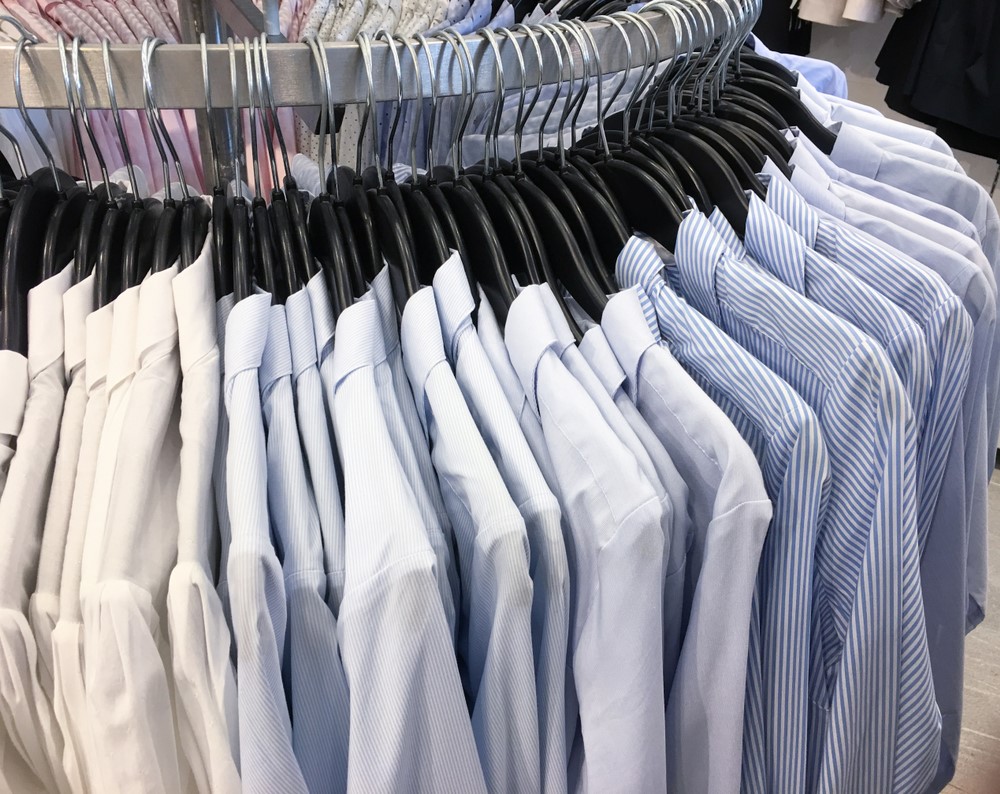
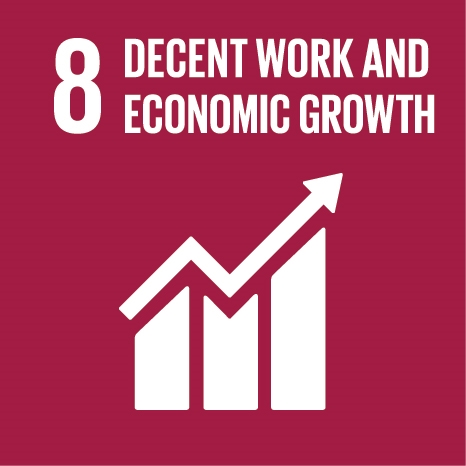
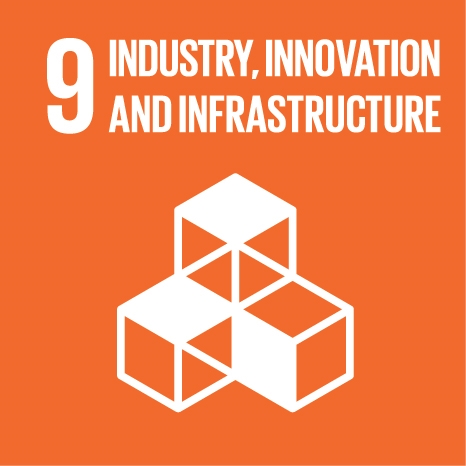
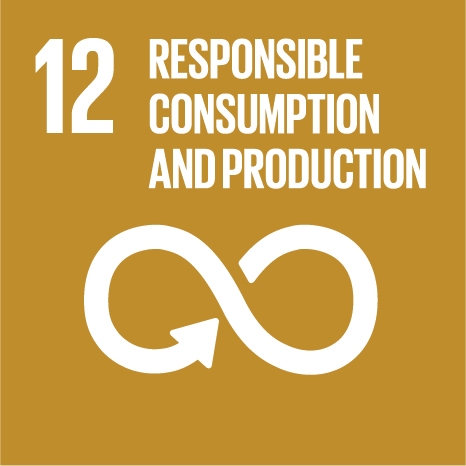
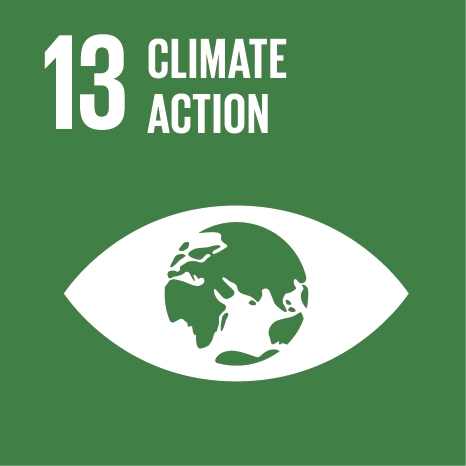
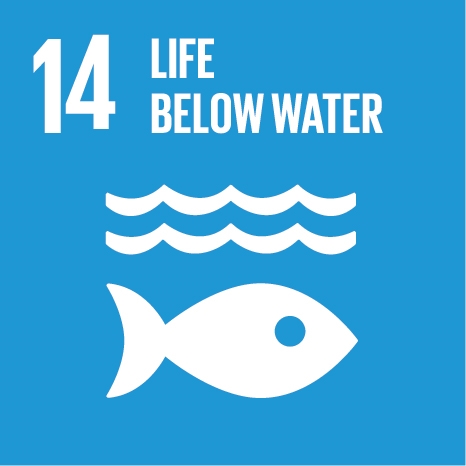
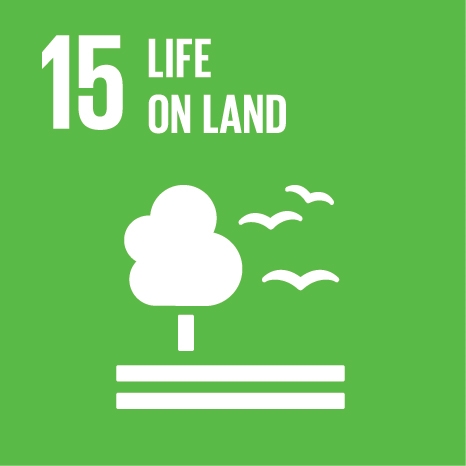
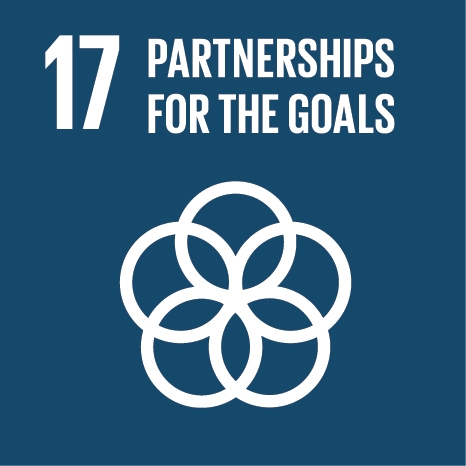
"Bibbidi bobbidi boo!" ... Do you remember the Cinderella fairy tale? The part where the Fairy Godmother turns Cinderella's rags into an evening dress for the ball at the Royal Palace? On a contemporary reading, the two protagonists of the popular tale could be seen as the pioneers of circular fashion, which today represents a USD 73 billion market. The recovery, reuse, repair and rental of clothes, together with the sale of second-hand clothing, seem to have become the key to reducing the environmental impact of the fashion industry. A trend that is increasingly in vogue, especially among Millennials and Generation Z, with a huge potential: from 3.5 % of the entire fashion market, it could cover up to 23 % by 2030, amounting to USD 700 billion, with a 16 % drop in emissions produced by the industry, i.e. 340 million tonnes of CO2 equivalent (CO2e, a unit of measurement that expresses the impact of greenhouse gas emissions on the climate) per year, corresponding to one third of the emission reduction required by 2030 for the industry to tackle global warming.[i]
Among the biggest polluters
The data shows it: the fashion industry, as it is currently conceived, is one of the biggest polluters. The production of garments doubled between 2000 and 2015, but their use decreased by 36%[ii]: they are barely worn and then dumped in landfills, where 85% of the garments end up, or 40 million tonnes of textiles per year (every second the equivalent of a truckload of textile rubbish is burned or dumped in landfills).[iii]
Not only did overproduction have a significant impact on greenhouse gas emissions: 2.1 billion tonnes in 2018, between 5 to 10% of the global total. [iv] But fabric processing and dyeing are responsible for 20% of industrial water pollution and 35% of microfibres in the oceans are attributable to washing clothes made of synthetic fibres, especially polyester.[v] The fashion industry is also the second largest consumer of water in the world: in total it takes almost 3,200 litres to produce one cotton T-shirt and over 9,000 to produce one pair of jeans.
Whereas fashion brands in 2000 were producing 2 collections per year, in 2011 they were producing 5. Some fast fashion brands even go up to 24 collections per year (Zara).[vi] All the more so as this trend has had a negative effect on profits: due to ever lower prices and loss of revenue - from overstocks, stock breakages and returned goods - the profit margins of the world's leading apparel retailers have fallen by an average of 40% from 2016 to 2019. The covid pandemic further exacerbated the situation, where the industry suffered a 90% reduction in profits.[vii]
Fashion and social criteria: a difficult dress to make
A lot of words, little action and a lack of transparency: these, in short, are the findings of The Business of Fashion (BoF) Sustainability Index 2022, which measures progress in the fashion industry in six specific areas (emissions, transparency, water and chemical pollution, raw materials used, workers' rights and waste) through data collected from 30 leading fashion companies to achieve the Sustainable Development Goals set by the United Nations.[viii]
Except for emissions, which have decreased slightly, in the other areas there is a clear lag behind the targets to be met by 2030: labour rights and waste are forgotten areas, even more so after the crisis caused by the pandemic. Regarding the violation of human rights, “the United States recently blacklisted all cotton imports from the Xinjiang region of China in response to state-sponsored allegations of forced labour”.[ix]
Despite the poor performance, Puma achieved the highest score (49/100), followed by Kering, Levi Strauss, H&M Group and Burberry.[x] As much as the fashion bigwigs talk about sustainable development, the term used in the report to frame the situation is 'extensive inaction'. The BoF therefore asks the 30 companies involved in the survey to clearly indicate the strategies they intend to adopt to trigger real change, redoubling their efforts through more targeted rules and policies to incentivise action and increase transparency along the entire fashion supply chain (design, sourcing of materials, processing and production, transport, distribution, garment lifecycle) and adopting practices to protect the wellbeing of workers.[xi]
Due to a lack of data, the study did not include the Chinese low-cost fashion giant Shein, valued at $100 billion, with a turnover greater than Zara and H&M combined. Recently, however, the company was the subject of a documentary broadcast by the British broadcaster Channel 4, in which a reporter managed to sneak into one of the factories to which Shein outsources the production of its products, gathering disconcerting testimonies on the working conditions of the employees: eighteen-hour days, no holidays and starvation wages. Moreover, it was also discovered that some articles contain dangerous substances (phthalates, formaldehyde and nickel) in quantities exceeding the levels permitted by European laws. In practice, these products would be illegal here.
An industry at the crossroads
According to Greenpeace, "the fashion industry is at a crossroads and must choose which path to take. It can either continue with the current model based on wasteful practices and disposable models that will continue to increase the industry's environmental impact on our Planet and social fabric or, alternatively, reverse course by becoming creative and innovative through the adoption of revolutionary businesses that respect the resource limits of our Planet".[xii]
Opting for sustainable fashion means relying on ethical production, which considers environmental impact, such as circular fashion, with biologically certified and recycled raw materials, and the use of innovative technologies to reduce pollution and water use, but also paying attention to social impacts, promoting more transparent supply chains based on digital traceability models, fair wages, safe workplaces and fair trade.
Towards a circular fashion
At the heart of the European Green Deal, the package of strategic initiatives that aims to put the EU on the road to green transition, the circular economy model is a key objective. In the textile sector, the aim is to ensure by 2030 that products placed on the European market are recyclable and long-lasting, made of premium materials, able to withstand multiple washes, eco-friendly and versatile: this is to drastically reduce the volume of waste and the rate of pollution. Companies must therefore reduce the number of annual collections. Circular business models embody an important opportunity for innovative and sustainable growth, as revenues are independent of the production of new garments: reducing the use of raw materials means less pollution, emissions and pressure on biodiversity. And although sectors such as rental and resale are booming and have great potential, there are still a number of obstacles related to the current linear system that need to be overcome, such as performance indicators, based on sales volume, product design, made to be short-lived and to become waste after a few washing cycles, and supply chains and infrastructure, organised in a unidirectional way, that need to be rethought from a circular business perspective[xiii], where it is a priority to also take social aspects into account by addressing the issues from the outset.[xiv]
In 2019, the four circular business models of the fashion world (resale, rental, repair and remaking with recycled fabrics) accounted for a market of USD 73 billion, or 3.5 % of the global fashion market: the main users are the young (Millennials) and the very young (Generation Z). By 2030, it is expected to grow to USD 700 billion: 23% of the entire market.[xv]
Resale has the largest share by turnover with USD 46 billion, or 63% of the circular fashion trade, with a forecast to grow to USD 476 billion by 2030. The segment includes the exchange of second-hand items (online and offline), platforms that connect sellers and buyers (online and offline) and resale of one's own brand (online and offline). Among the leaders in the sector is the social network Depop, founded in 2011 by the British-Italian entrepreneur Simon Beckerman: it allows anyone to sell and buy used clothing and accessories. Especially loved by Generation Z, under 26 years of age, it doubled its turnover between April and June 2020.[xvi] The app, which in 2021 had 27 million users in 147 countries, was acquired by Etsy (Nasdaq: ETSY) in June of that year for USD 1.6 billion.[xvii] In the same vein, Vestiaire Collective, the French company founded in 2009 that runs a fashion site specialising in the sale of second-hand luxury goods, increased its orders by 54% from February to May 2020.[xviii] It is present in 52 countries and today has 23 million members, especially Millennials, between 26 and 40. The Lithuanian platform Vinted, founded in 2008, has 68 million members, especially young people between 18 and 35, and is active in 12 markets in Europe. Selling or buying something is very easy. After downloading the app, you jump straight into action by uploading a photo of the item you want to sell. Overseas we find two Californian start-ups, both listed on the Nasdaq. Poshmark (POSH), a sustainable resale network, founded in 2011, has 80 million users and in 2021 had revenues of USD 326 million, an increase of 22% over the previous year (USD 262 million). Similarly, ThredUp (TDUP), the second-hand fashion platform founded in 2009 in San Francisco, achieved a turnover of USD 252 million in 2021, a 35% growth over 2020.
Clothing rental, both private-to-private and on broad-based platforms, accounts for 21% of the circular fashion market, with USD 15 billion. It is expected to grow to USD 167 billion by 2030.[xix] The first rental service platform was founded in 2009 in New York: Nasdaq-listed Rent the Runway (RENT) rents women's designer clothes and accessories through its shops and online sales. The leading company in its field, it had a turnover of USD 157 million in 2021. By Rotation, launched in 2019 in the UK, saw its number of users almost double from March 2020 to January 2021. The secret of its success? Anyone can open a profile and rent clothes and accessories on their own terms (By Rotation retains 15%).[xx] Founded in 2014 by Portuguese Filipa Neto and Lara Vidreiro, included by Forbes in the 2018 'innovators in retail and e-commerce 30 Under 30' list, Chic by Choice aspires to be Europe's Rent the Runway. The startup ships to more than 15 markets on the old continent. The UK-based Rotaro offers labels such as Birger Christensen, Ganni and Rejina Pyo for hire. Each dress can be rented from as little as £15 for four days, depending on requirements. The Swedish Hack your Closet provides monthly subscription services, allowing its customers to dress fashionably in an affordable and waste-free way. Established brands are also investing in this business model: Ralph Lauren introduced 'The Lauren Look' platform, while H&M Group is exploring a number of new rental concepts (COS Resell, ARKET, Conscious Collection).
Repairing clothes accounts for 13% of the circular fashion market: it is around USD 9 billion and is expected to reach USD 32 billion by 2030.[xxi] Zara, a few weeks ago, launched a pilot project in the UK to repair their clothes. Simply send them online or deliver them directly to all British Zara shops and, by paying a fee for the service, they will be repaired and returned within ten working days. The US company The Renewal Workshop has over the past six years developed a marketplace for the online sale of repaired clothes. It was recently acquired by the Dutch company Bleckmann, which operates logistics and distribution services throughout Europe for the fashion retail industry, with worldwide shipping capabilities. The ambition is to create a circular supply chain, encouraging brands to join the project. The Restory, based in London, is an on-demand service that provides after-sales assistance for luxury items: it offers craft services for the repair of handbags, shoes and leather goods. It has recently partnered with several e-commerce sites, such as Farfetch Fix and Harvey Nichols. These are mutually beneficial partnerships. The Restory found that 85% of customers remain loyal to a brand because of after-sales services and not because of pre-sale marketing.[xxii]
Finally, remaking accounts for 4% of the market, with USD 3 billion, and in 2030 it could potentially reach a turnover of USD 16 billion.[xxiii] This segment includes all those companies that create new items from existing objects or pieces of them through reuse, assembly and repurposing. In this case, we are talking about upcycling, a fashion that is also trending among the big names such as Balenciaga (the coat made of 'shoelace fur'), Marni (the patchwork coats), Coach (the 1970s bags) and especially Miu Miu (the upcycled collection). There are, however, those who have made this modus operandi their raison d'être, such as the young designer Priya Ahluwalia, a stylist of Indian and Nigerian origin and founder of the Ahluwalia brand, who creates clothes mixing folk, 90s and art. Her work dedicated to sustainable fashion has been awarded the prestigious LVMH Prize and the Queen Elizabeth II Award for British Design, and in 2020 Forbes included her in its list of Europe's 30 Under 30 for Art and Culture. While London-based Helen Kirkum, with her eponymous brand, produces shoes, specifically sneakers, using only waste materials from landfills. Re/Done, specialising in recycled denim clothing, collaborates with Levi's jeans to create sustainable jeans, jackets and shorts in downtown Los Angeles. Zero Waste Daniel is an upcycling clothing brand based in New York: from organic sweatshirts to sportswear, ZWD creates genderless pieces, advancing the idea of fluid fashion, attentive to gender identity. In Italy, too, we find examples of virtuous companies in this sense: Blue of a Kind, founded by Fabrizio Consoli, makes jeans, starting exclusively from existing clothing and stock fabrics, and Rifò, based in Tuscany, in Prato, collects old cashmere, cotton and jeans garments to transform them into a new yarn with which it creates new high-quality clothing.
Designer garments? Yes, traced and digitised
Digitalisation can also play an important role in favour of more sustainable fashion through a range of technological tools such as supply chain monitoring, tracking systems and digital passports for each garment. Once all stages of production of a garment are digitised, from raw materials to the end of a garment's life cycle, it is possible to exactly verify the origin and composition of a fabric, whether the material is sustainable, where, how and who made a product and more. Everyone can benefit: suppliers and manufacturers can more easily validate the origin and composition of fabrics, brands can have sustainability claims and a wealth of data at their fingertips to improve their supply chains, and consumers can check and compare the ESG (Environmental, Social and Governance) credentials of different brands when purchasing each garment. Furthermore, with the ability to assign a unique identity to each product, guaranteeing its origin and composition, the counterfeit market, which costs the fashion industry USD 450 billion a year, can be combated.[xxiv]
Among several technology companies offering comprehensive services in this area, the Swedish start-up TrusTrace has developed a digital platform for product traceability, providing support through a range of services such as supply chain mapping, material traceability, validation of certificates at product and factory level, product carbon footprint calculation and customer communication. In 2019, US-based EON, a company specialising in the development of product traceability software, collaborated with H&M, PVH, Microsoft and other leaders and experts in fashion, technology, politics and academia to create the CircularID protocol: this is a global identification system that enables digital recognition of items to be placed in the circular fashion market and access to essential material information. Similarly, Tailorlux, founded in 2009 as a spin-off of the Faculty of Applied Sciences at the University of Münster, has developed a programme of scannable optical fingerprints capable of detecting very detailed information about fabrics and yarn composition. For this reason, in 2019 it was hired for the organic cotton traceability study sponsored by the C&A Foundation, the Organic Cotton Accelerator and Fashion for Good.
Beyond physical products
There is also another innovative, revolutionary and eco-friendly reality that is catching on: virtual fashion. What is this all about? Digital clothes that can be worn on social networks for a snapshot or in other contexts on the net, but which are not physically produced, but only exist in the form of pixels, with the aim of reducing CO2 emissions and avoiding the use of materials, water and plastic.
Research have shown that 9% of people in industrialised countries buy new clothes just to take pictures and create content on online profiles. So why not just wear them virtually? This is the thinking behind the Californian start-up Dress-X, a virtual fashion e-commerce company founded in 2020, which already collaborates with several fashion designers. The company is particularly aimed at those who need to be photographed in trendy clothes every day, such as influencers. The sales work in a simple way: the customer chooses clothes on the site, just as he or she would on any other online platform, then sends the photos to Dress-X; within 1-3 days he or she receives photos by e-mail where he or she is wearing the selected garments, at a much lower price than he or she would have paid for the same garment produced physically. For its part, the digital fashion house The Fabricant, based in Amsterdam, creates 3D clothing to be worn in the metaverse, but above all collaborates with several established companies in the sector, such as Adidas, Puma, Tommy Hilfiger and Napapijri for their advertising campaigns, enriching them with special effects, animated covers, etc., without wasting an inch of fabric.
[i] Circular Business Models, Ellen MacArthur Foundation, 2021, p. 5, p. 69.
[ii] Ibi, p. 5.
[iii] Introducing The BoF Sustainability Index, tracking fashion's progress towards urgent environmental and social transformation, The BoF Sustainability Index 2021, p. 33.
[iv] Ibi, p. 17.
[v] These Facts Show How Unsustainable is the Fashion Industry, World Economic Forum, 31 January 2020.
[vi] Ibidem.
[vii] Circular Business Models, Ellen MacArthur Foundation, 2021, p. 5.
[viii] The BoF Sustainability Index 2022, BoF, 2022.
[ix] The Sustainability Gap, how fashion measures up, BoF, 2021.
[x] The complete table can be found in: The BoF Sustainability Index 2022, BoF, 2022.
[xii] La Moda ad un bivio, Greenpeace, 2017, p. 10.
[xiii] Circular Business Models, Ellen MacArthur Foundation, 2021, p. 25.
[xiv] Ibi, p. 6.
[xv] Ibi, p. 15.
[xvi] Ibi, p. 15.
[xvii] Rental clothing is the next big retail boom, Wired, 16 July 2021.
[xviii] Circular Business Models, Ellen MacArthur Foundation, 2021, p. 15.
[xix] Ibi, p. 15-16.
[xx] Abiti a noleggio, tutti i nuovi servizi di fashion renting, IO Donna, 29 January 2021.
[xxi] Circular Business Models, Ellen MacArthur Foundation, 2021, p. 15-16.
[xxii] Ibi, p. 43.
[xxiii] Ibi, p. 15-16.
[xxiv] Transparency and Resilience in Fashion, Cleantech Group, 4 June 2020.